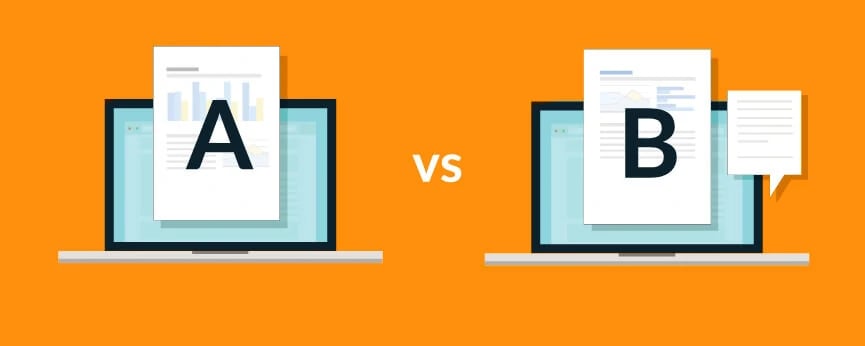A/B Testing
2 min read


A/B testing is a method of comparing two versions of (i.e. a web page or app feature) to see which performs better. It is used to help businesses make data-driven decisions about design changes. The process typically involves randomly dividing website visitors or app users into two groups:
Group A sees version A of the page or feature
Group B sees version B
The behavior of the users in each group is then tracked and compared to determine which version is more effective. This method is called A/B testing because there are two versions (A and B) being compared to each other.
A/B testing is commonly used in various industries and applications, such as:
E-commerce:
A/B testing can be used to optimize product pages, shopping cart flows, and checkout pages to increase conversion rates and revenue.
Marketing:
A/B testing can be used to optimize email campaigns, landing pages, and advertising to improve click-through rates and conversion rates.
SaaS:
A/B testing can be used to optimize sign-up forms, pricing pages, and on-boarding flows to improve user engagement and retention.
Mobile apps:
A/B testing can be used to optimize user interfaces, navigation, and feature sets to improve app usage and retention.
Gaming:
A/B testing can be used to optimize game levels, mechanics, and in-game purchases to increase engagement and revenue.
The best practices for A/B testing:
Define clear goals:
Identify the specific metrics you want to improve, such as conversion rates, click-through rates, or user engagement.
Create a hypothesis:
Based on your goals, create a hypothesis about the changes you want to make and how they will impact the metrics you're tracking.
Test one thing at a time:
Make sure to only test one change at a time, so you can clearly attribute any improvements to that specific change.
Use a large enough sample size:
Make sure you have a large enough sample size to ensure statistical significance in your results.
Run the test for long enough:
A/B tests should be run for a sufficient amount of time to gather enough data to make accurate conclusions.
Analyze the results:
Use statistical tools to analyze the results of your test and make data-driven decisions.
Iterate and improve:
Use the results of your A/B test to make further changes and improvements.
Be patient:
A/B testing can take time, and it is important to be patient and not to draw conclusions too early
